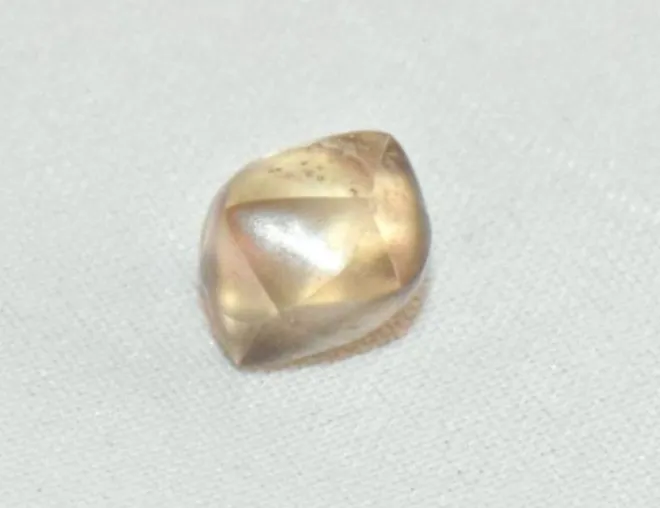7-year-old girl finds large diamond on her birthday at Arkansas park known for precious stones
A 7-year-old girl found the second largest diamond recorded this year at an Arkansas state park.
Aspen Brown was visiting Crater of Diamonds State Park in Murfeesboro, about 90 miles southwest of Little Rock, with her family on Friday to celebrate her birthday.
Aspen went home with a shiny new trinket from the park, a 2.95 golden brown carat diamond found on the north side of the park, according to a news update from Arkansas State Parks.
The largest diamond found this year was unearthed in March weighing in at about 3.29 carat. The diamond was also brown.

More on Aspen’s adventure on Crater of Diamonds State Park
The Paragould resident and her family were walking on a plowed field, right above the eroded surface of a volcano when she decided to stop and take a break.
“She got hot and wanted to sit down for a minute, so she walked over to some big rocks by the fence line. Next thing I know, she was running to me, saying ‘Dad! Dad! I found one!,” Aspen’s dad Luther Brown shared with park officials.
The gem Aspen picked up along the pathway was the size of a pea. The family stopped by the Diamond Discovery Center to have park officials confirm the find was a diamond.
“Aspen’s diamond has a golden-brown color and a sparkling luster. It is a complete crystal with no broken facets and a small crevice on one side that was created when the diamond was formed. Its certainly one of the most beautiful diamonds I’ve seen in recent years,” assistant park superintendent Waymon Cox said.
Visitors often name the diamond or diamonds they find at the park. Luther Brown thought that the Aspen diamond was the perfect name for the diamond his daughter found.
“There was no skill required for her to find it. She was just in the right place at the right time,” Luther Brown said.
How many diamonds have been found?
A farmer by the name of John Huddleston was digging up diamonds on Crater of Diamonds land way before it became a state park in 1972. Over 75,000 diamonds have been found since then, according to park officials.
The largest diamond ever found in the U.S. was found at Crater of Diamonds in 1924 during an early mining operation.
One to two diamonds are found by park visitors every day and 563 diamonds have been registered at the park in 2023, totaling more than 89 carats.
Aspen’s diamond was the first large diamond registered since park officials started an excavation project last month.
“A contracted company dug a 150-yard trench in August to help manage erosion on the north side of the search area. Several tons of unsearched diamond-bearing material were exposed and it's very possible that this diamond and others were uncovered as a result,” park superintendent Caleb Howell wrote.
Tips for finding a diamond at Crater of Diamonds State Park
Crater of Diamonds State Park is one of the only places in the world where visitors can search for diamonds from an original volcanic source, according to the Crater of Diamonds State Park’s website.
The diamond search area consists of a 37.5 acre field. Any rocks, minerals, or gemstones a visitor finds are theirs to keep.
Visitors can also bring their own mining equipment or rent tools from the park. No battery powered or motor-driven mining tools are permitted, the website stated.
Even though diamonds come in all shapes and colors, the three colors most commonly found at the park are: white, brown, and yellow. Park staff will assist in identifying all of the rocks, minerals, or gems found in the park.
Here are some things to keep an eye out for as you search:
- Diamonds are usually clean crystals with a rounded surface and metallic shine
- About half of all diamonds registered by park guests are found in sifted gravel taken home from the park.
- Each guest may take up to five gallons of sifted gravel home per day to search for diamonds later.
Diamond search area admission is $13 for adults and $6.20 for adults. An admissions past cost $220. For more information, visit Crater of Diamonds State Park’s website.
Disclaimer: The copyright of this article belongs to the original author. Reposting this article is solely for the purpose of information dissemination and does not constitute any investment advice. If there is any infringement, please contact us immediately. We will make corrections or deletions as necessary. Thank you.





